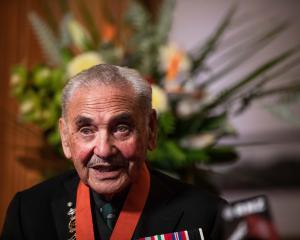
Recently, the opportunity to undergo some formal training presented itself. I’m now enrolled in a paper on "group and dialogue facilitation skills" as part of a conflict resolution course. The addition of group skills to my toolkit will no doubt be useful.
My class, primarily women from Aotearoa, is currently establishing itself as a group where discussion is guided by our skilful tauiwi co-facilitators. This is providing us with first-hand experience of how group facilitation works in practice.
We have been looking at the origins of group dialogue. Interestingly, the development of groups for facilitating conversations came out of First Nations’ traditional practices. Community members were concerned about the high rates of ongoing incarceration. This led them to initiate meetings with officials where the indigenous way of supporting group discussion was used. As Māori, we also have traditional protocols for engaging in group dialogue for problem solving and resolving conflict.
I remember visiting my marae as a youngster and witnessing long discussions in reo, a lot of which I did not understand. Those kōrero always felt very long and I availed myself of any opportunity to escape the monotony, even if that meant helping out in the kitchen. The kitchen was frequently a bustling hive of activity, kōrero and laughter. Most often everyone just got on with what needed to be done. Sometimes, however, there were disagreements and personality clashes. Short sharp words would ensue from the wahine in charge, promptly returning us all to our mahi.
Next door in the wharenui, I can remember hearing my karanipapa addressing the people gruffly, sometimes stamping his beautifully carved tokotoko, followed by the voices of other agitated speakers. There was a lot of head nodding, grunts of dis/approval, and many moments of silence as people mulled over the statements that were being made. Many hours would pass before those involved would finally come to a conclusion and we were allowed to eat. The people who had just been arguing were now seated together laughing and enjoying each others company over kai.
Only in recent times have I understood the tapu nature of discussion as it takes place on the marae and the return to noa in sharing kai together. The notion of holding space and time for such kōrero and engaging in the whole process has struck me as being pivotal in conflict resolution. Nowadays, not only do we not have important discussions as often as we should, but when we do they are not given the place of importance that they deserve.
I now see the importance of having a space that is for special activities, such as the management of conflict, more so because they are guided by tikanga Māori. When I’m going onto the marae, I’m engaged in a heightened awareness of entering a realm of important activities, which sets the scene and my attitude. There’s no need to discuss what and how things will be done in detail because tikanga is just followed. And it works.
Upon reflection, my karanipapa and his contemporaries provided a framework for conflict resolution that was considered and practical, often fraught with frustration and anger, but they always walked away from it with an agreed pathway forward. There are gaps in my understanding regarding the mechanics of how they got to that point, but I plan to be in the right paths to learn.
The course covers tikanga Māori approaches to group dialogue, taught by Māori experts. The first session will be facilitated kanohi ki te kanohi in a couple of weeks, which will also be the first time the group will meet in person. Apart from being taught we will also share kai. I’m very appreciative of the opportunity for this learning and how it can help fill the gaps left by my inattentiveness as a youngster.
Although my course group is another set of people to get to know and work with, I’m enjoying the process. We all seem to be there for the "right" reasons, to take our role in paving good relations and pathways ahead. For me, it’s somehow reassuring to know that I’m walking in the footsteps of wise ancestors. And I’m grateful for those who know the old ways and can guide me.












